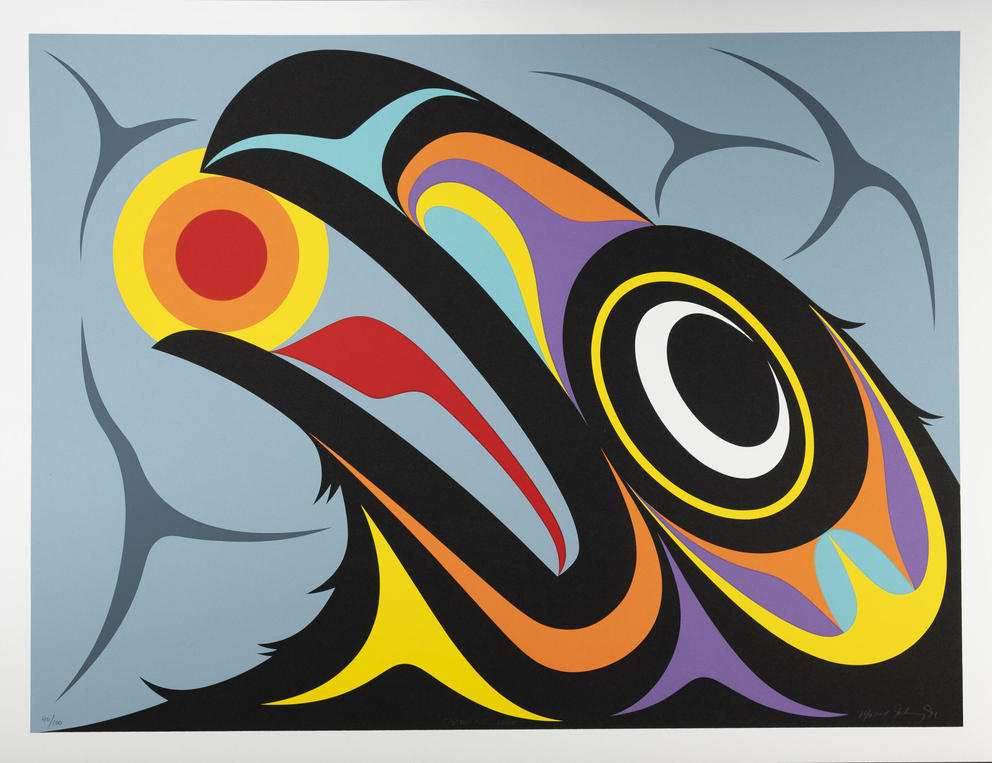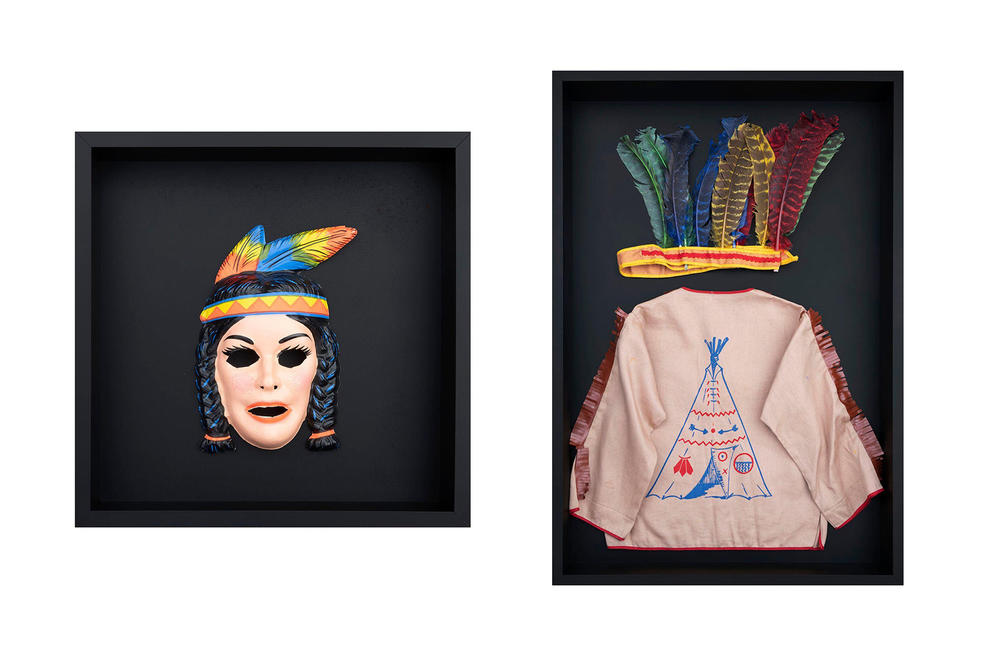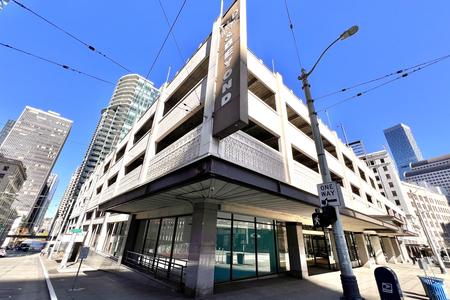The Pacific Northwest is rich in Indigenous visual arts, including those displayed year-round by two long-standing galleries devoted to contemporary Native art.
ArtSEA: Notes on Northwest Culture is Crosscut’s weekly arts & culture newsletter.
Stonington Gallery, in Pioneer Square, is currently featuring its annual Luminosity group show (through Dec. 3) highlighting Northwest Native glass art and including works by local art stars Preston Singletary, Dan Friday and Raven Skyriver.
I also highly recommend browsing the gallery’s prints, paintings, jewelry and carvings, from Allie High’s incredibly cute “Slipstream” otter serigraph to Heather Johnston’s colored pencil drawings on antique Alaskan maps.
Near the Pike Place Market, Steinbrueck Native Gallery is currently showcasing the electric work of Steve Smith (Kwakwaka'wakw and Wuikinuxv). In the show Sea to Sky, the Vancouver, B.C., artist blends neon color with the formline design traditions of Northwest Coast art on paddles, drums, paintings and sculpture.
Also on view at Steinbrueck is the gallery’s expansive collection of works by contemporary artists with Indigenous Northwest Coast and Arctic heritage, from Susan Light’s brightly abstract serigraph “New Horizons (First Light)” to Alison Bremner’s funny screenprint “Pete Carroll Trying to Wear a Mask.” (Remember how terrible the coach was at keeping one over his mouth during pandemic Seahawks games?)
And at ARTS at King Street Station’s third-floor gallery, check out the new installation by Bremerton artist Tammie Dupuis. Her new multimedia show Places Between (through Jan. 6, 2024) includes paintings, intricately beaded portraits and a 45-foot long “beaded” pathway called “Long Walk.” On instagram Dupuis explained that the piece refers to a three-day, 103-mile walk her Bitterroot Salish ancestors were forced to take north to the Flathead Indian Reservation after being pushed out of the Bitterroot Valley.
It’s open only Saturdays 1 - 5 p.m. (and by appointment), but new Pioneer Square art space Solas Gallery has been staging some powerful shows. Next up is Object/Ritual (Nov. 25 - Jan. 20), featuring the work of photographer and weaver Selena Kearney of the Chehalis Tribe.
For this series, Kearney sources stereotypical “Indian” costumes — fake headdresses and tomahawks, plastic masks, sports insignia — from eBay and elsewhere and photographs the pieces in black-backed boxes, as if fine art or museum pieces.
The results are a potent display of caricature and commercialism. “Suspended in the dark,” she writes in her artist’s statement, “they shine with the loss and sadness for an intimacy given up for the benefits of consumerism and discovery.”
Almost exactly one year ago, ʔálʔal Cafe opened at the base of the Chief Seattle Club, offering foods based in Indigenous traditions (Bison barbacoa tacos, blue corn mush with wojape), Salish Grounds coffee and Native cookbooks.
Now the cafe has added new menu items (see: stinging-nettle pesto salmon bowl) jewelry, medicine bags and prints made by members of the Chief Seattle Club.
And also: a fall exhibition by Tacoma-based quilter and painter Naomi Parker (through Dec. 3). The artist, of Makah/Yakima/Chippewa/Cree descent, is exhibiting one of her hand-dyed quilts, and her oil paintings based on relatives coming together at powwow grounds and other gatherings.
If all this art has you hungry for more Indigenous recipes, be sure to visit Off the Rez Cafe, located inside the Burke Museum, for fry bread, braised bison rice bowls, and their special take on “Indian tacos.” While there, leave time to explore the Burke — where Native American heritage is in evidence on every floor.
And here’s where I start to run out of room. But not before I let you know about several Indigenous-themed documentaries coming up at Northwest Film Forum. While Killers of the Flower Moon may be getting all the box office buzz, these docs reveal powerful Native American histories as well (and with much shorter running times).
Bad Press (Nov. 16-19) is a gripping story about the fight for free press in the Muskogee Nation, where the tribe’s own legislative branch worked to gain full editorial oversight of what was reported in the tribal newspaper. Ever Deadly (Nov. 18-22) profiles mesmerizing Inuk throat singer Tanya Tagaq via concert footage and animated storytelling.
And as part of the “Moving History” series, NWFF is also screening two video segments about prominent Northwest Native activists: Upper Skagit elder and environmentalist Vi Hilbert; and Bernie Whitebear (Confederated Tribes of the Colville Reservation), who played a major role in the occupation of Fort Lawton and the founding of the Daybreak Star Cultural Center (both screening Nov. 26).
Which brings us to shopping. If you’re planning to partake in “Black Friday” madness, consider channeling some of that consumer energy toward one of our region’s many options for buying Native art.
Daybreak Star Cultural Center houses the original Sacred Circle Gifts and Art shop, featuring all kinds of cool cards, jewelry, prints, calendars and more made by Indigenous artists. (Also currently on view: an exhibit by painter Shana Yellow Calf Lukinich, who blends Coast Salish, Plains and Metis/Chippewa styles.)
And there’s another Sacred Circle shop at Sea-Tac Airport — which I can personally attest is a great way to pass the time when your Thanksgiving travel has been horribly delayed.
The Duwamish Tribe is hosting its hugely popular Native Art Market in the Longhouse and Cultural Center once again (Nov. 24-26), featuring a wide array of arts and gifts made by local artisans.
And while you’ll have to wait for a restock to purchase the gorgeous Eighth Generation blanket recently featured on the cover of British Vogue (wrapped around Killers of the Flower Moon star Lily Gladstone — who, by the way, grew up partly in Seattle and took drama classes at Stone Soup Theatre), you can shop for other items at the new location of the Snoqualmie Tribe-owned store.
Founded in 2008 by Louie Gong (of Nooksack heritage), Eighth Generation recently moved from inside Pike Place Market to a bigger location across the street — all the better to bring you more wares crafted by Native makers from across the country, including warm, fuzzy piles of fashion-mag-worthy wool and cotton blankets.
Get the latest in local arts and culture
This weekly newsletter brings arts news and cultural events straight to your inbox.





